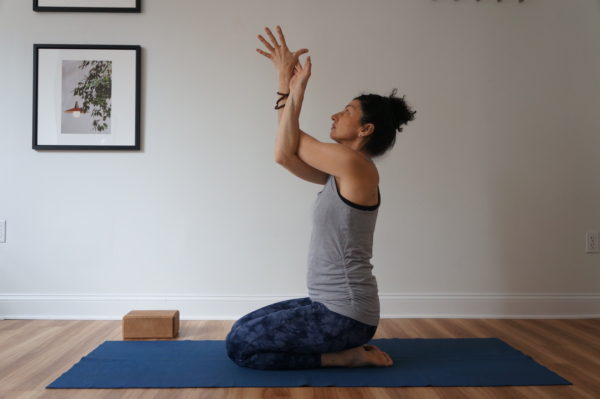
For many years, I taught a very standard sequence. I learned it from my first teacher, Baron Baptiste, and he called it “Journey into Power.” It was standard in that it has the same sections today that it had over 10 years ago and teachers are trained to this sequence even now. It’s a great one and provides students with a well rounded workout.
One of the highlights of the sequence was that it built up to a peak pose: Wheel. This concept of “peak pose” is probably not new to you if you’re familiar with yoga. The idea is your start students out with movements that are relatively accessible and at a pace that warms up the body. The movements also give students a chance to both strengthen and stretch muscles so that when they need to use them in the peak pose, they are ready.
This idea of building to a peak pose is one that as teachers, we can use when we build sequences. It can be fun for students to practice in a way that takes them on a journey where the preliminary movements are all leading up to one pose that pulls all those movements together and it can be fun for teachers to create sequences with a peak pose in mind because it challenges our knowledge of yoga, anatomy and sequencing.
For the past many years, I have taught primarily from experience. I might think about a peak pose before class or I might think about an anatomical theme and then I go into the studio and teach around that idea. For the first several years of my teaching, I used the JIP sequence and only changed up a few things now and then and it was great. As a new teacher I appreciated that structure so I could manage all the other aspects of teaching. Lately though, I started to carry a little notebook with me and an hour or so before class, I sit and write out a few things about the class I’m about to teach.
I include a peak pose and then work backwards, identifying the anatomical themes and the poses involved. I find that it helps me to stay out of the routine and encourages me to try new things. As you gain more experience as a teacher, you’ll want to find new ways to approach your teaching and new ways to reinforce essential themes. It doesn’t mean you’re always “changing things up” and it doesn’t mean you’re “making things harder/doing fancy poses;” it just means you’re approaching it with a slightly different energy and intention.
The other day I decided the peak pose would be Shoulder Stand, which I literally never teach. I’m always concerned about students flinging themselves into the pose and hurting their neck. But this time I decided to focus on how to create a solid foundation using the shoulders instead of the neck and kept repeating that instruction in poses like Bridge and several variations of Bridge. There were other reminders around shoulder positioning in the standing series. By the time they got to the floor, I was able to let go a bit of my concern and watch them and reinforce the cues.
It’s always a balance between teaching solid cues, bringing in the anatomy, sharing what to look for when you’re in a pose and also letting students “just be.” The more you focus on anatomy, it can be hard to let your students “just be” because you know a lot of the details and it’s easy to get wrapped up in them. We need to always remember that we’re a guide and the students need the freedom to move and “just be” however that is. We can share our tips and guidance, knowledge and alignment suggestions but at some point we have to be okay with how it looks (within reason and as long as they’re not doing something that might cause injury).
If you like creating sequences, pick up my easy to use sequencing template:
Thanks for reading and please leave a comment if you’d like!
